Cryptantus: description, types and tips for growing
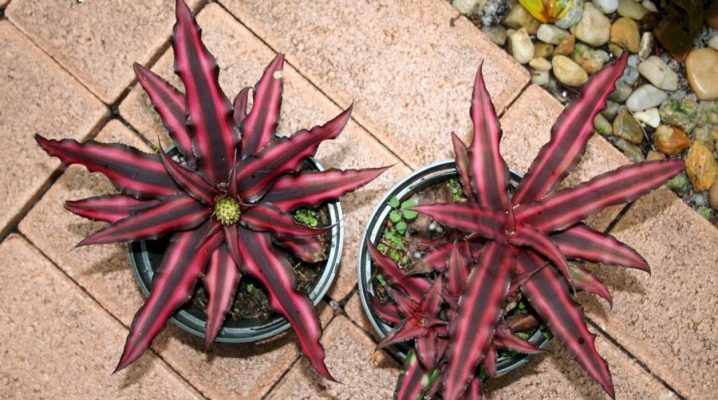
A plant called cryptantus can be found frequently in both residential and public spaces. This representative of the flora belongs to the bromeliad family. In its natural environment, the flower grows in Eastern Brazil. Due to the unique structure (there is practically no stem or it is very short), the leaves form a spectacular, and at the same time neat rosette. In the article, we will take a closer look at this variety and talk about the basic rules of growing and care.

Description
The plant is characterized by long and large leaves that are pointed towards the edges. Many varieties of indoor flower stand out in a wavy relief on the foliage. The color can be different and consist of several colors: green, brown, white, yellow, pink. In houses and apartments, varieties are often grown that are decorated with stripes. Due to the combination of several colors in the color, the word "mix" is added to the name of the plant.
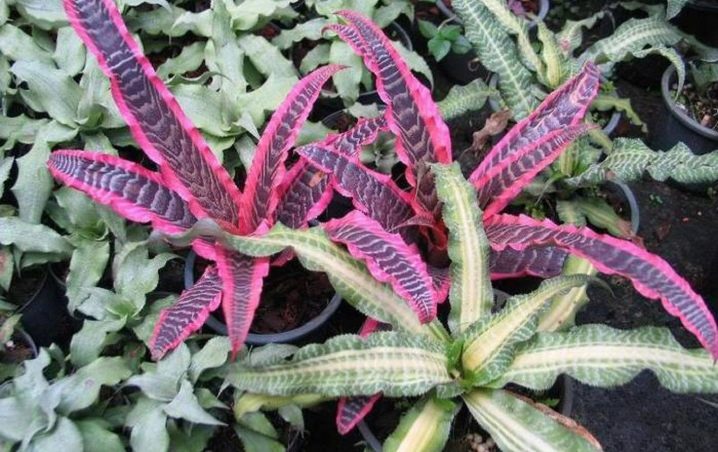
Cryptantus blooms with compact flowers, which are located in the center of the rosette. At the end of the flowering period, the maternal rosette of the plant withers, however, before this time, lateral shoots ready for transplantation ("babies") must be formed.
The plant needs fertile soil due to its developed root system. With this characteristic, it stands out noticeably against the background of other representatives of the above family. Experts note that the flower is not capricious, but needs full care and the creation of comfortable conditions for development.
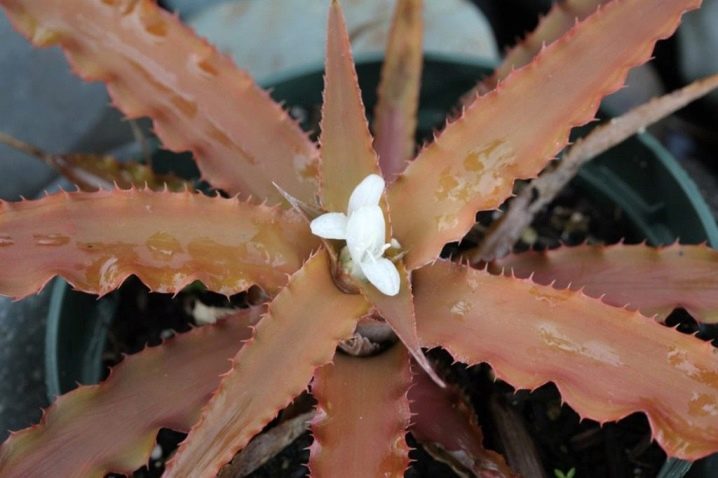
Home care
Lighting
Bright light is a prerequisite for keeping the plant beautiful and healthy. Some growers claim that even with medium light, the flower will grow normally, but to achieve maximum aesthetic qualities, full lighting must be provided.
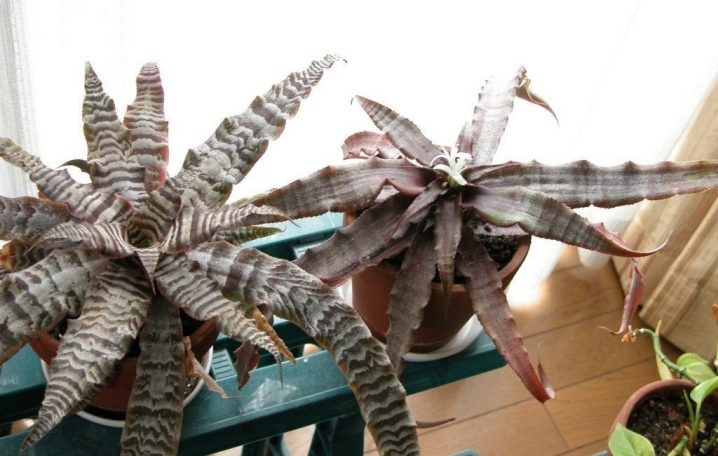
The plant is light-loving, however, direct sunlight should not be allowed on the leaves.
In the hot season, darkening from the midday and scorching sun should be issued. The saturation and brightness of the pattern will depend on the brightness of the light. With the onset of winter, artificial daylight sources are used to maintain comfortable conditions.
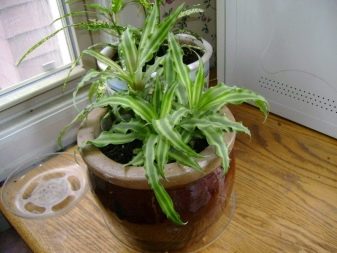
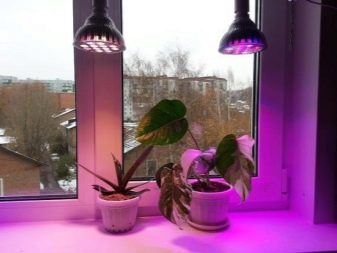
Temperature
Ideal values range from 22 to 24 degrees above zero Celsius (in summer). With the onset of a cold snap, the value can be lowered by about 4 degrees. As practice shows, the plant will feel normal at a temperature of 15 to 24 degrees, but the indicators indicated above are considered optimal.
It is important to protect the plant from sudden changes in temperature and drafts. These two factors negatively affect all representatives of the flora growing at home.
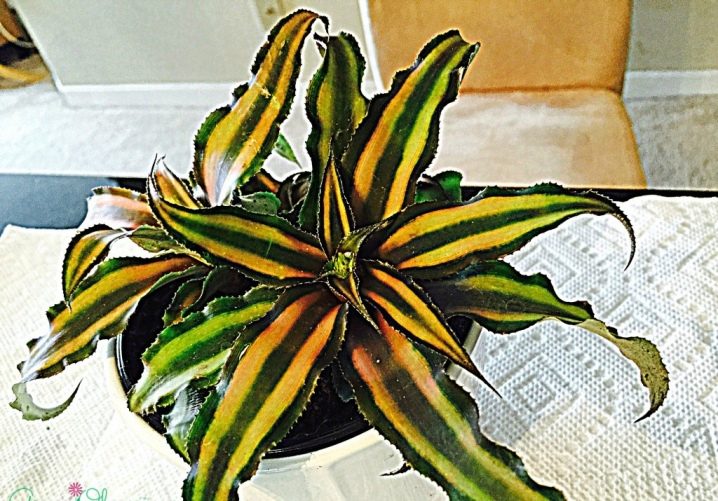
Humidity level
High humidity is ideal for cryptantus. Experienced experts who have been growing indoor plants for more than one year recommend installing a special humidifier near the plant. This device will be especially useful during the heating season, when the air in the apartment becomes dry due to the heaters. You also need to regularly spray the plant with settled water.
Another recommendation from professionals is to place the flower in the terrarium during the heating season.
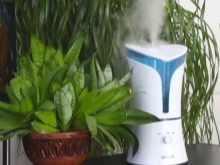
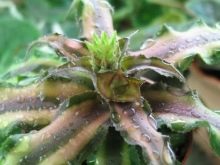
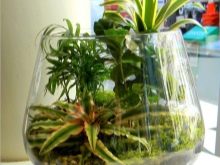
Watering
Moisten the soil regularly, but in moderation. Due to the small size of the root system, excess moisture can provoke the onset of the development of putrefactive processes. During hot seasons, you need to keep the soil moist, but not wet. At the same time, make sure that the earthen lump does not dry out.
When the plant goes dormant, the amount of watering should be slightly reduced. This time falls from the end of autumn to the beginning of winter. Keep the soil slightly moist.
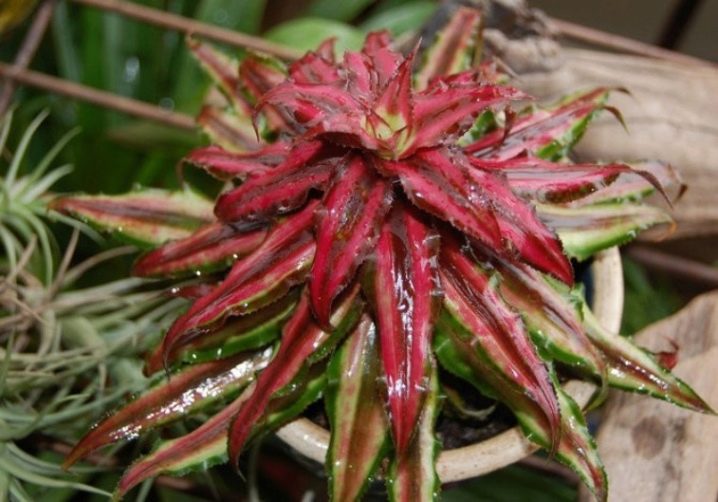
Fertilizers
Nutrients should be added during the period of active plant growth. The work is carried out once a month during the summer. In the cold season, you do not need to use top dressing. During this period, the plant stops developing. Mixtures are used that are designed specifically for representatives of the flora from the bromeliad family.
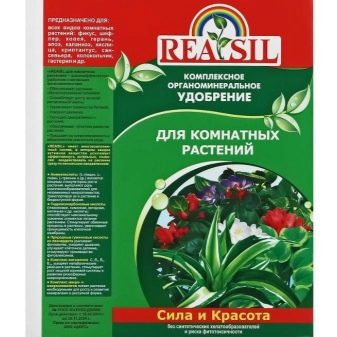
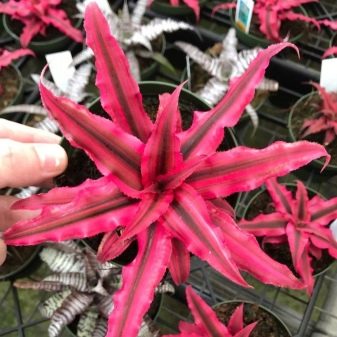
Transplant features
Cryptantus practically does not need a transplant. It can grow for a long time in the same soil. The reason for the transplant is to change the container as the flower grows. But due to the fact that the plant has slow growth, some growers do not transplant it at all.
During flowering, an active process of formation of shoots begins. In this case, additional space may also be required.
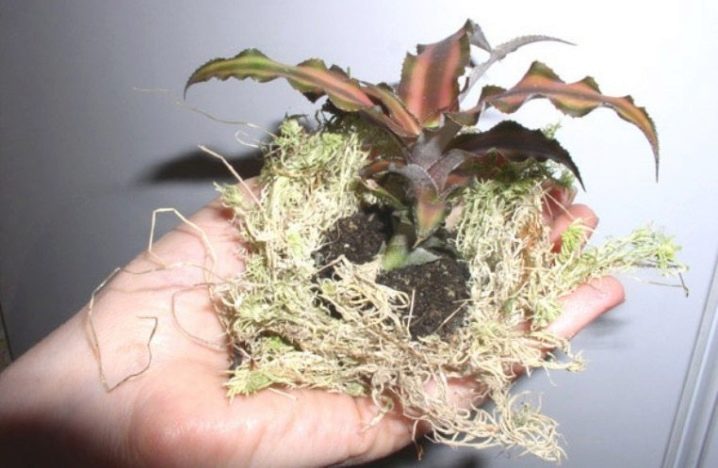
The soil
The ideal soil should have excellent water-permeability characteristics to avoid moisture stagnation. This prevents rotting of the roots and the plant itself. You can purchase a ready-made substrate in a specialty store or prepare it yourself.
To do this, you need to mix the following components:
- sphagnum moss;
- humus;
- leafy land;
- pine bark;
- high-moor peat.
Proportions: 1: 0.5: 1: 3: 1.
Be sure to arrange the drainage layer, the height of which should be one third the size of the flowerpot.
To grow a flower at home, you can use a regular plastic container. The plant is unpretentious to the material of the flower pot.
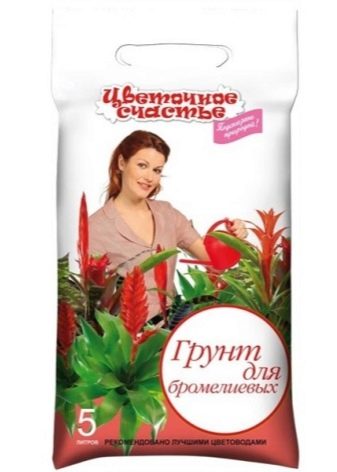
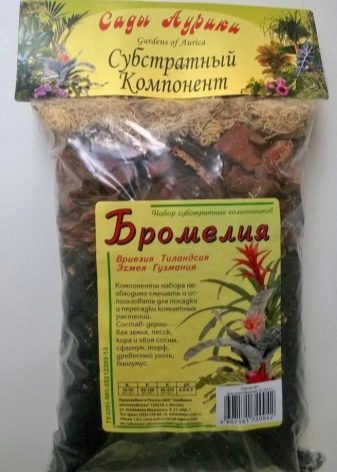
Reproduction
Scions
The bulk of "children", with the help of which the plant reproduces, is formed at the base of the plant. They can be seen at the end of the flowering period. After about 2 months, 3 to 4 leaves appear on each shoot. Also, their root part becomes noticeable. The “babies” are carefully detached from the mother plant and placed in separate pots.
The following soil composition is ideal for young plants:
- leaf land - 3 parts;
- river sand - 1 part;
- small pine bark - 1 part.
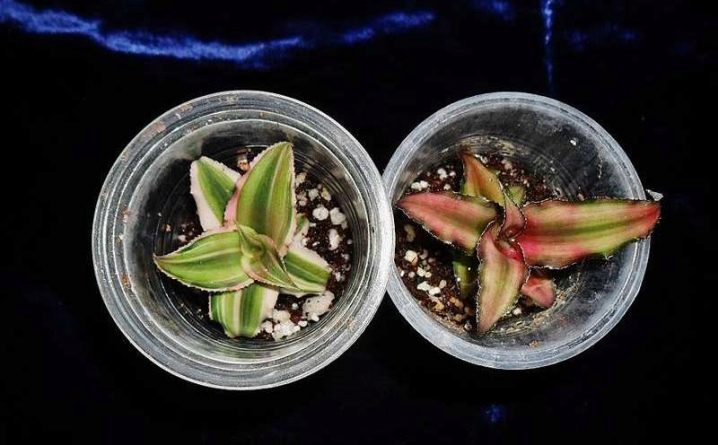
Also, new shoots are allowed to be planted in compact pots with sphagnum moss. The containers should be placed in a room with a temperature of 25 to 28 degrees Celsius. Protect them from direct sunlight.
In order for young plants to actively develop, it is recommended to arrange a homemade greenhouse around them, that is, cover the plants with film, transparent plastic and other materials.
Every day you need to remove the shelters and air the flowers.
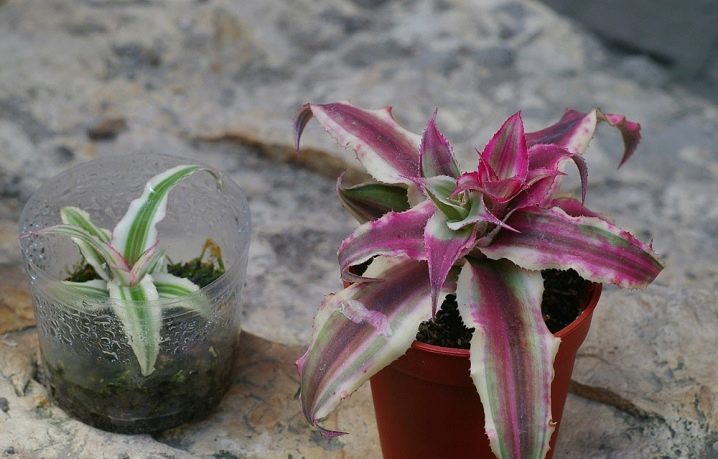
Seeds
Reproduction using seeds is considered long and painstaking, therefore it is rarely used. Experienced growers strongly recommend using only fresh and undamaged seeds. They are planted in soil, which is prepared by mixing sand with peat. Remember to periodically moisten the soil. The minimum temperature should be 26 degrees Celsius. Greenhouse conditions are created around the plants. As soon as sprouts appear from the seeds, they are transplanted.
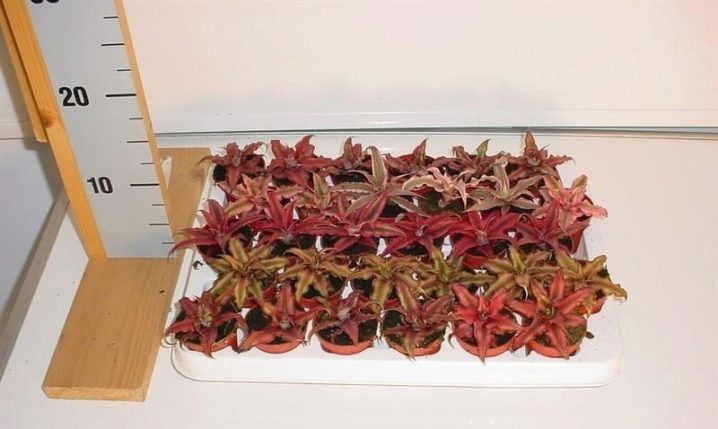
Possible diseases and problems
The plant has strong immunity that protects it from dangerous pests and diseases. Despite this, cryptantus can suffer from such ailments.
- Root and deciduous rot. The cause of this ailment is excessive watering, drafts and low temperatures.
- The presence of traces of burns on the leaves indicates that the plant is exposed to direct sunlight.
- If you notice that the tips of the leaves have begun to dry on the flower, the air in the room is too dry.
- The plant loses its brightness and attractiveness due to lack of moisture in the soil.
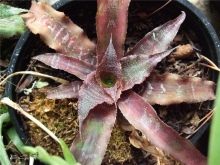
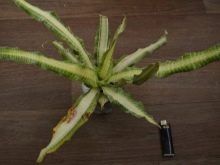
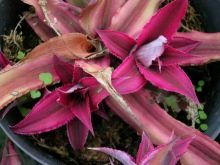
Main varieties
Let's take a closer look at the main and most popular types of cryptantus flower.
Acaulescent
According to most gardeners, this is the most common and demanded type, which is found most often. A perennial plant is characterized by narrow-lanceolate and leathery leaves with pointed ends. The edges are slightly wavy. The maximum length of each sheet is 20 centimeters. During the flowering period, small light buds are formed. Often, large green leaves adorn stripes of light green color. There is also a variety that attracts green and pink colors.
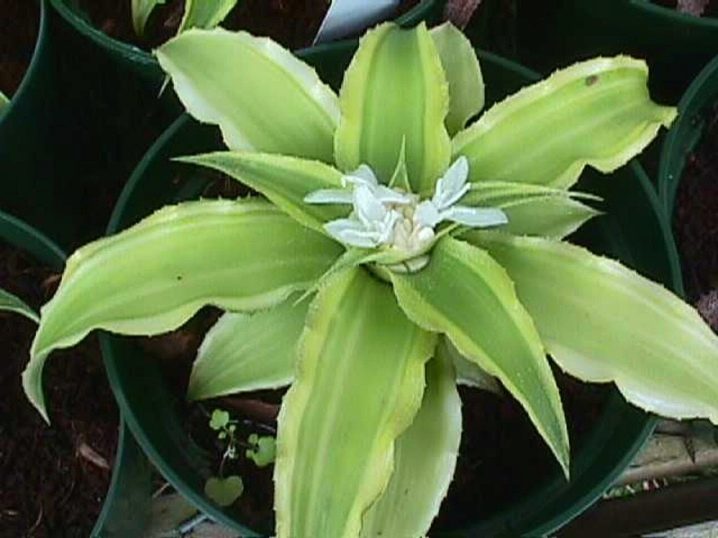
Bromeliad (bromeliad)
The main distinguishing feature of this species is the small trunk. The leaves are bright and can be of different colors, from dark red to green in various shades. The edges are wavy and serrated. At a high level, growers have noted the Tricolor species. The color of the plant combines stripes of three colors: white, green and pink with a red tint.
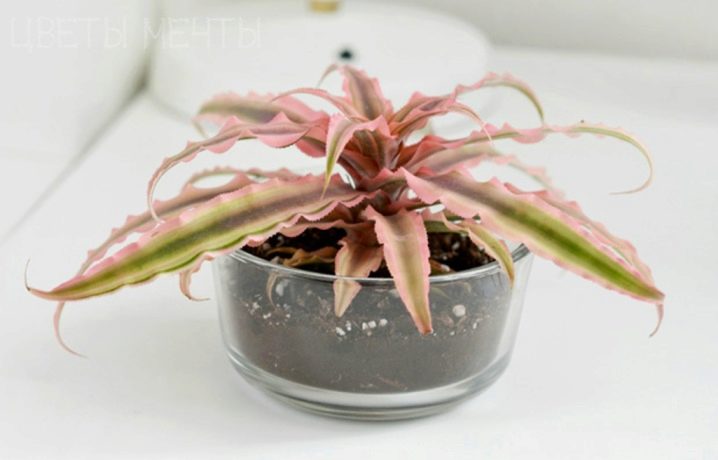
Two-lane
This variety is characterized by a more compact size. The size of the leaves ranges from 7 to 10 centimeters. Also note the small diameter of the rosette, reaching a maximum of 15 centimeters. The rosette is neat and tightly shaped. The raised edges are covered with small teeth.
The color of the plant is pale green, with long light stripes along the leaf. Designers often use this variety to decorate small live compositions. The flowers are very small and faded. There is a species with a pink color and light green stripes.

Cross-striped
The name of this species speaks for itself. The flower attracts attention with its original and dynamic color. An expressive transverse coloration covers each leaf of the plant, from base to edge. Like the first variety, the plant boasts long foliage, reaching 20 centimeters in length.
Spectacular transverse stripes can be either white or light yellow. They stand out noticeably against a rich green background and create a contrast effect. During flowering, small white buds can be seen.
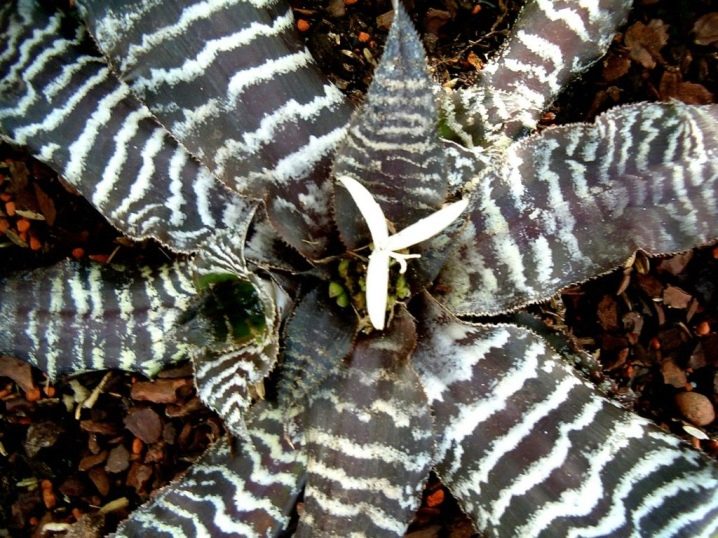
Foster
This type of plant, in appearance, is very similar to the variety described above. It is also characterized by a cross-striped pattern, however, its dimensions are different. The average length of the leaves varies from 30 to 40 centimeters, with a width of 4 centimeters. Due to its large size, the plant is recommended to be grown in spacious rooms. At the base, the leaves taper.
The main color of the plant is brown with a red tint. Stripes in light gray have a zigzag shape. The edges are wavy, with small scales. An expressive mix of two contrasting colors creates a rhythmic pattern.
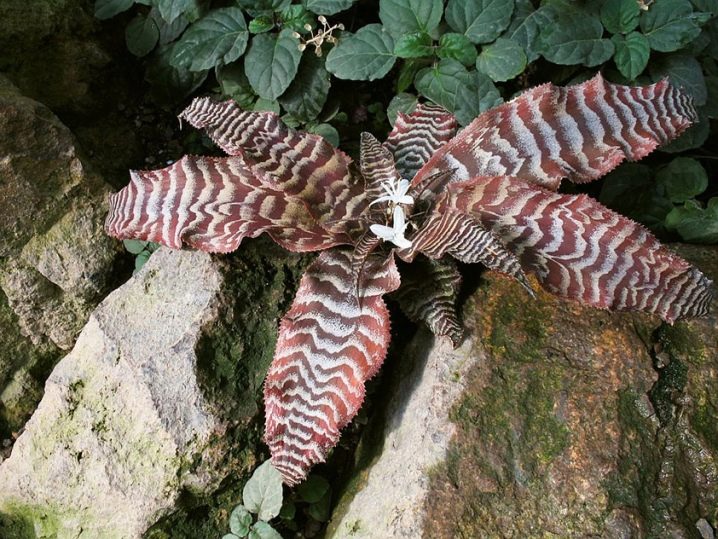
For the features of cryptantus care, see the video below.























The comment was sent successfully.